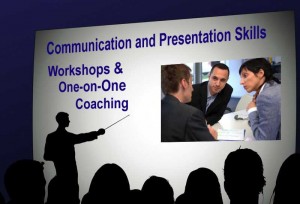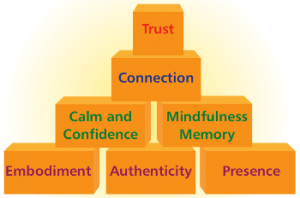Avoid Presentation Mistakes
Most of us have experienced dull, irrelevant, or confusing presentations. But think back to the last really great presentation you saw – one that was informative, motivating, and inspiring. Wouldn’t you love to be able to present like that?
This article looks at 10 of the most common mistakes that speakers make when giving presentations. By avoiding these, you’ll make your presentations stand out – for all of the right reasons, and none of the wrong ones.
Mistake 1: Not Preparing Enough
 Steve Jobs was a famously inspiring speaker. His speeches may have looked effortless, but, in reality, each one took days or weeks of preparation.
Steve Jobs was a famously inspiring speaker. His speeches may have looked effortless, but, in reality, each one took days or weeks of preparation.
Careful preparation is essential. The amount of time you spend on planning depends on your situation, but it’s a good idea to start early – you can never be too well-prepared.

Not Familiarizing Yourself With the Venue and Equipment
Imagine that your presentation starts in an hour. You arrive at the venue and, to your horror, the projector won’t work with your laptop. The slides you spent hours preparing are useless. This is a disaster!
You can avoid a situation like this by taking time to familiarize yourself with the venue and available equipment at least once before your presentation.
Mistake 3: Ignoring Your Audience
Sometimes, speakers can get so wrapped up in delivering their presentations that they forget about the needs of their audience.
Start your presentation by telling your audience what to expect. Let them know what you will cover first, whether and when you’ll stop for a break, if you’ll be taking questions during the presentation, and so on.
Providing these “signposts” up front will give your audience a clear idea of what to expect, so that they can relax and concentrate on your presentation.
Mistake 4: Using Inappropriate Content
The primary purpose of any presentation is to share information with others, so it’s important to consider the level you will pitch it at.
Mistake 5: Being Too Verbose
Short, concise presentations are often more powerful than verbose ones. Try to limit yourself to a few main points. If you take too long getting to your point, you risk losing your audience’s attention.
 The average adult has a 15- to 20-minute attention span, so, if you want to keep your audience engaged, stick to the point! During the planning phase, make a note of the themes you want to cover and how you want to get them across. Then, when you start filling out the details, ask yourself: “Does my audience really need to know this?”
The average adult has a 15- to 20-minute attention span, so, if you want to keep your audience engaged, stick to the point! During the planning phase, make a note of the themes you want to cover and how you want to get them across. Then, when you start filling out the details, ask yourself: “Does my audience really need to know this?”
Mistake 6: Using Ineffective Visuals
Poor slides can spoil a good presentation, so it’s worth spending time getting yours right.
When choosing colors, think about where the presentation will take place. A dark background with light or white text works best in dark rooms, while a white background with dark text is easier to see in a brightly lit room.

Choose your pictures carefully, too. High-quality graphics can clarify complex information and lift an otherwise plain screen, but low quality images can make your presentation appear unprofessional. Unless an image is contributing something, embrace the negative space – less clutter means greater understanding. Use animation sparingly, too – a dancing logo or emoticon will only distract your audience.
Mistake 7: Overcrowding Text
The best rule of thumb for text is to keep it simple . Don’t try to cram too much information into your slides. Aim for a maximum of three to four words within each bullet point, and no more than three bullets per slide.
This doesn’t mean that you should spread your content over dozens of slides. Limit yourself to 10 slides or fewer for a 30-minute presentation. Look at each slide, story, or graph carefully. Ask yourself what it adds to the presentation, and remove it if it isn’t important.
- Mistake 8: Speaking IncoherentlyEven though we spend a significant part of the day talking to one another, speaking to an audience is a surprisingly difficult skill, and it’s one that we need to practice.
-
Mistake 9: Showing a Lack of Dynamism
Another common mistake is to freeze in one spot for the duration of your presentation.

As well as working the stage, he used gestures to communicate his excitement and passion for his subject. Pay attention to what your hands are doing – they’re important for communicating emotion. But only use gestures if they feel natural, and avoid being too flamboyant with your arms, unless you want to make your audience laugh!

Mistake 10: Avoiding Eye Contact
Have you ever been to a presentation where the speaker spent all of his time looking at his notes, the screen, the floor, or even at the ceiling? How did this make you feel?
Meeting a person’s gaze establishes a personal connection, and even a quick glance can keep people engaged. If your audience is small enough, try to make eye contact with each individual at least once.
If the audience is too large for this, try looking at people’s foreheads. The individual may not interpret it as eye contact, but those sitting around them will.
